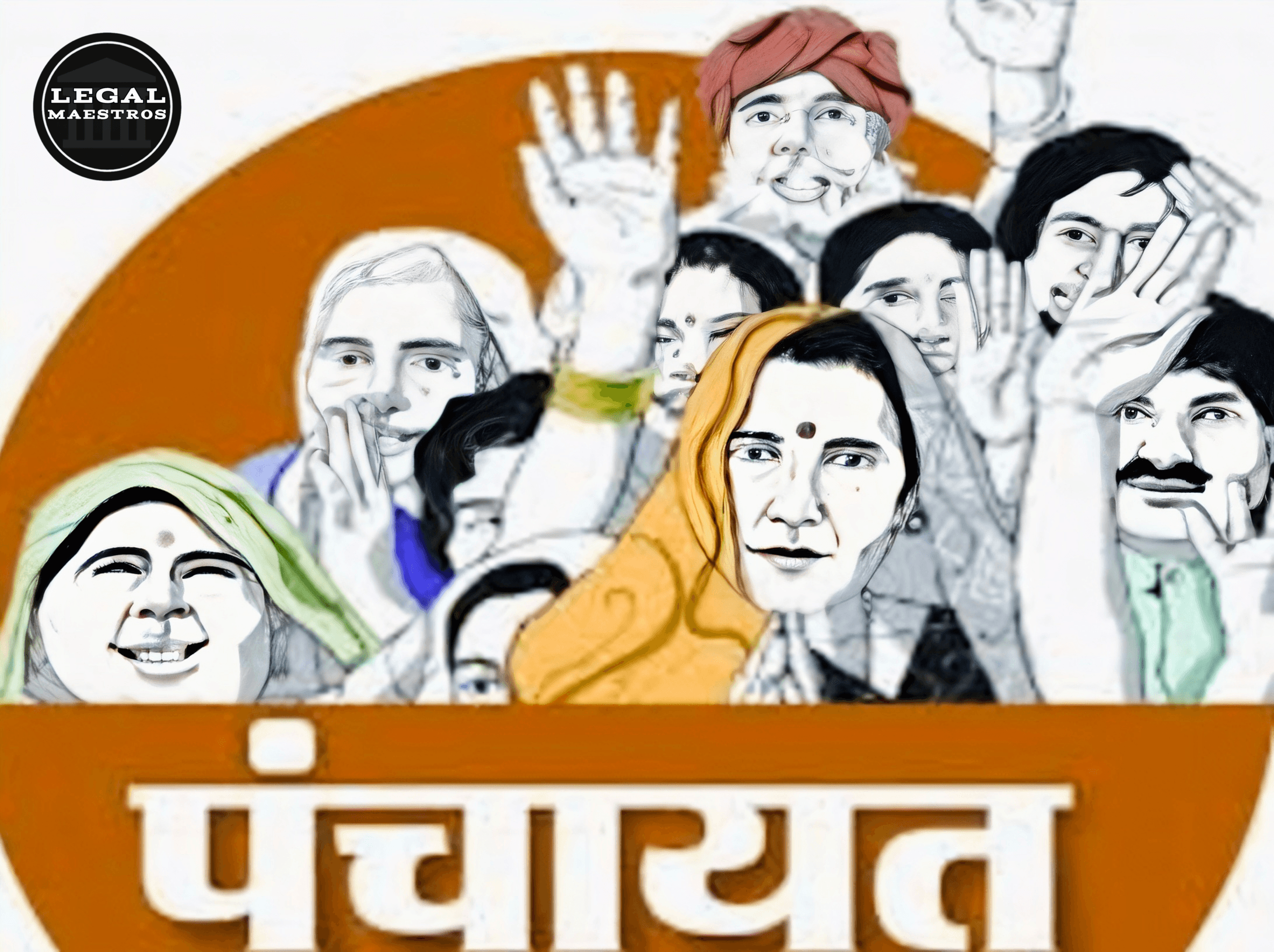
The show highlights the activities of the Panchayati Raj system; by drawing attention to the duties and functions of the village head (Pradhan) and the elective head of the gram panchayat (Sarpanch). Panchayati Raj institutions were given constitutional stThe show highlights the activities of the Panchayati Raj system by drawing attention to the duties and functions of the village head (Pradhan) and the elective head of the gram panchayat (Sarpanch). Panchayati Raj institutions were given constitutional status through the 73 th and 74 th Constitutional Amendment articles sent in 1992. Their objectives were to decentralise power and achieve participation at the grass roots in governance. The 73rd amendment is specifically concerned with rural local self-governing institutions (Panchayats) whereas the 74th Amendment is concerned with urban local self-governing institutions (Municipalities). These amendments came up with three-tier panchayats:
Gram Panchayat: village level
Panchayat Samiti: Gantvel.
For any queries or to publish an article or post or advertisement on our platform, do call at +91 6377460764 or email us at contact@legalmaestros.com.
District: Zila Parishad
The main/various provisions of the 73rd Amendment:
Democratic Decentralization: 73 nd amendment Act is a huge step towards decentralization of power.It has made the Panchayati Raj institutions more powerful and accorded constitutional powers to the Panchayati Raj institutions.
Three-tier System: The Act has extensive provision for a three-tier arrangement of Panchayati Raj institutions at the village, intermediate and district levels. This aids in the proper operation of the PRI system.
Direct Elections: At the village, intermediate and district levels, all the members of the Panchayats are directly elected by the people. This guarantees the accountability of the elected representatives to the people.
Reservations: On the regulation of the seats in Panchayats of the Scheduled Castes (SCs), Scheduled Tribes (STs) and women is dealt with as provided in the Act. This will guarantee the inclusion of these marginalized parts of society during decision making.
Composition: The panchayats possess a tenure of five years only. This gives the PRI system a carrier and enables the representatives who are elected to work freely on the development of their regions.
State Election Commission: The Act makes provision for the establishment of a State Election Commission to organize elections for the Panchayats. This guarantees free and fair elections to PRI institutions.
Preparation of a State Finance Commission: In the furtherance of the needs of the Panchayats, the Act envisages a State Finance Commission that will examine the financial situation of the Panchayats and give an opinion to the Governor on the action that should be taken in a bid to improve the financial status of the Panchayats.
Powers and Responsibilities: Under the Act, powers and responsibilities are devolved to the Panchayats as regards economic development and social justice. This also involves the planning and execution of economic development and social justice schemes and encouraging education, health and other social welfare programmes.
Panchayat – Funny excursion inside grass-roots governance
The great web series Panchayat has managed not only to entertain millions but also to open the curtain on the inner goings-on of India in the field of the Panchayati Raj. Such are the travails and successes of the characters, especially Abhishek Tripathi, the engineering graduate molded into a Panchayat Secretary, and the mysterious Pradhan Pati that we get an exciting though fictionalized tour of the constitutional amendment that forms the basis of governance at the village level.
The Constitutional Back Story: It is More Than a Bureaucracy
The very idea of the show lies in the base of 73rd Constitutional Amendment Act of 1992. Prior to the landmark amendment, village self-government in rural places was not always tied to the constitution hence the bypass in harmony and authentic empowerment. All that was altered by the 73rd Amendment which realised a common framework among the Panchayati Raj Institutions (PRIs) all over the nation.
What does the Panchayat demonstrate in this matter?
The office itself: the fact itself that there exists a specialist office of a Panchayat Sachiv (Panchayat Secretary) with official files and government schemes is only the direct result of a constitutional requirement that a working administrative agency at village-level should be established.
Elections: Although a detailed portrayal is not given, the democratic process through which the Pradhan and other members of Phulera Ward are put in place forms the very essence of the 73rd Amendment, the direct elections of the grass-roots steps.
The Process: File to field work (and filthy! )
The story of Abhishek in Phulera is a lesson in learning the reality (and more than a little bit frustrating) part of executing the constitutional dream.
Lots of what Abhishek does is about enabling schemes that the government has put in place, constructing toilets (the notorious “Toilet Seat” episode), sorting out financial aid, etc. Such plans are usually launched at the upper governmental levels but should be undertaken by the Panchayats which have been enabled by constitutional amendments to take place so that local demands can be addressed.
Gram Sabha: It is not always smooth sailing but the Gram Sabha (village assembly) where possession of decisions is taken by the villagers, is a very important democratic device brought about by the 73rd Amendment. We can see a glimpse of that, but usually in a chaotic way in the show when villagers express their concerns and demands.
Inter-Departmental Coordination: Abhishek is always struggling with the problems of coordination with district officials, block development officers as well as getting the other government departments on board. This shows in the complex governmental system that the constitutional amendments were trying to implement, that there should be a connection between the village and the upper administrative unit.
The Role and Responsibility: Pradhan Sarpanch and the Pradhan Pati Phenomenon
It is superbly handled how the elected representatives are used by the show, primarily Manju Devi, the titular Pradhan, and her husband, Brij Bhushan Dubey, the de facto Pradhan Pati.
The constitutionally elected head of the Gram Panchayat in charge of the overall development of the village is the Pradhan (Sarpanch) in some states. They are the formal signer, chief decider, and mouthpiece of the village. Despite the beginning resistance of Manju Devi and her subsequent development, as shown in the film, the sheer strength and authority of this office is realized. She adds value to the constitutional belief of empowering women in leadership positions which is one of the main provisions of the 73rd Amendment which states that one-third of the seats are reserved for women. The story of her transformation, as a rubber stamp to however taking part in owing meetings and playing an assertive role in her authority, is the epitome of the spirit of the amendment.
The Pradhan Pati (Brij Bhushan Dubey): It is here that the Panchayat famously plays a quasi-realistic, and usually funny, role criticising this application. Manju Devi has been elected president of the Pradhan. But the real master of the show is her husband Brij Bhushan Dubey. He chairs meetings, makes decisions and also relates to officials on her behalf. This Pradhan Pati tendency is a common, despite illegal, experience in big segments of India, where women are elected in reserved seats but fear using their powers because they are afraid of exercising them or they are not allowed to do it. The play underlines the difficulty in actualizing the empowerment of elected women representatives, even though this is constitutionally required. It encourages the audience to think about how much the constitutional ideal differs from ground reality.
Obligations other than paperwork: The show depicts the unofficial, but essential obligations of the Pradhan other than the official ones, which are signing compulsions and attending meetings:
Conflict Resolution: Providing mediation between neighbor conflicts, water conflict and conflict resolution, Pradhan is the main conflict resolution person of the village.
Mobilization of Community: The Pradhan is very important in mobilizing a community, whether it is in the matter of organizing a cricket game event or a common mission or movement among the villagers.
Liaison to Authorities: They are the initial reference point for villagers who want to approach higher level and also carry out the needs of the village to the higher block and district administration.
Why the Panchayat is a Good Read (and a Good Watch) About the Constitution
That is an amazing piece of work by “Panchayat”: it brings humanity to the dry and bureaucratic world of the constitutional amendment process and local governance.
Relatability: The gap between urban sensibility and the realities in the countryside, on which Abhishek stumbles, the daily hardships of the provincial villagers helps to make the delicate constitutional framework seamless and comprehensible.
Humor: The use of humor is amazing where the show brings out the absurdities and difficulties of grassroots governance. The race to get a comfortable chair, the stunts of the people in the village and the recurring power failures also give a comic touch to what would otherwise have been a painful topic.
Character-Oriented Perceptions: Every character, however unrealistically positive Vishal is and unfathomably curmudgeonly Prahlad is, helps us to get a better picture of the way in which the constitutional provisions are transformed into everyday reality. As is shown in the show, the people who are to be affected by the successful implementation of any constitutional amendment can boil down to the people who are carrying it out, and the people to whom the amendment is geared towards.
To sum it all up, there is a lot more to Panchayat than what you might think of it as a comedy. It is an interesting, funny, and unexpectedly realistic depiction of the Panchayat Raj system which is depicted through the light of the cute characters in this story. It is both a wonderful example of how to implement the 73rd Constitutional Amendment, the local governance process and the multidimensional functions and responsibilities of the Pradhan/ Sarpanch, besides affording a good laugh in the process. Sources





1 thought on “Exploring Panchayati Raj Elections in Constitution Through Panchayat Series”